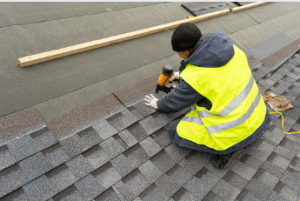When it comes to roofing, hiring a professional is a good idea. Hiring a professional can save you time, research, and money, but risks are also involved. For example, DIYers may use sub-standard materials and do a poor job, and you might end up with a shoddy job that requires expensive repairs later. Depending on your skills and experience, hiring a professional may be more cost-effective than DIY, but ask for a guarantee to ensure that your roof repair will last.
 When is a roof repair necessary? There are several factors to consider, from the cost to the size of the area affected. Here are some tips for a successful repair job. Roofing repair is necessary if your roof has open seams and is no longer watertight. These openings can be small but can grow to a significant size and cause extensive damage to your building. Fortunately, there are several ways to fix a leaking roof yourself, saving you a lot of money in the long run. Learn more about Old Port Roofing roof repair Adelaide.
When is a roof repair necessary? There are several factors to consider, from the cost to the size of the area affected. Here are some tips for a successful repair job. Roofing repair is necessary if your roof has open seams and is no longer watertight. These openings can be small but can grow to a significant size and cause extensive damage to your building. Fortunately, there are several ways to fix a leaking roof yourself, saving you a lot of money in the long run. Learn more about Old Port Roofing roof repair Adelaide.
Costs of roof repair
Many factors determine the cost of roof repair, but the most obvious is the severity of the damage. Damage can range from minor to severe, and the number of damaged shingles and the roof’s pitch are all factors that can affect the cost. The climate also plays a part, as wet and cold climates can cause the cost of repairs to increase. Finally, the cost of materials used in the repairs can also vary widely.
Signs of roof damage
When your roof shows signs of damage, you may not think to check it right away. However, if you notice these eight signs of roof damage, you may want to take action immediately. If you ignore these warning signs, you could risk getting the damage worse, causing more significant leaks and spreading mould. These are the eight common signs of roof damage and should not be ignored! To prevent these issues from worsening, you need to act now. Learn more about Old Port Roofing roof repair Adelaide.
Roofing underlayment
Roofing underlayment is a crucial component of a roof. It was simply a layer of building paper soaked in asphalt in the past. Modern materials, like rubberized asphalt, are made of a variety of materials, ranging from organic to synthetic. Their primary function is to protect the roof from moisture. Modern roofing materials also feature anti-slip technology to help prevent damage from slipping. Below are the three main types of underlayment.
Roofing shingles
Replace shingles on a roof involves removing nails attached to the shingle’s surface. You can then lift the shingle, exposing the nails that secure it to the roof deck. This step can damage the granular texture of the shingle, so be sure to lift both the shingle and the nails. The shingles are bonded together by asphalt sealant spots. You can break this bond by sliding a flat pry bar under the shingle’s edge. This step should be performed in cool weather; otherwise, the sealant will become hard to separate.
Asphalt shingle roofs
There are numerous reasons why your asphalt shingle roof might need roof repair. These include inclement weather and situations beyond your control. Improper installation and upkeep can also lead to substantial wear and tear. In addition, your roof can develop biological growth. Repairing the roof in the earliest stages can help to avoid more costly repairs. The best way to keep your asphalt shingle roof in good shape is to practice routine maintenance.
Wood shingles
If you have a wooden shingle roof, you need to ensure you’re not overlooking maintenance. Keeping your shingles clean is essential to their longevity. Keeping them clean also prevents the onset of harmful moulds. If you notice mould on your roof, you can treat it right away to avoid having a costly repair job later. To clean a wood roof properly, you should remove overhanging branches and debris. Also, make sure you have an open space for air to circulate and prevent it from forming.
